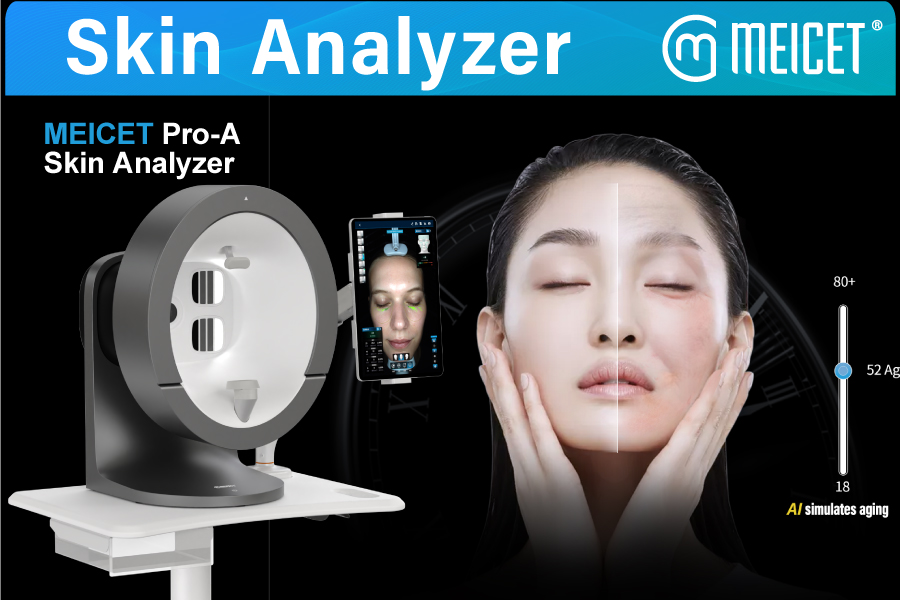— In a quiet dermatology clinic, a patient rests her chin against a sleek device. Multispectral lights sweep her face, revealing subsurface sun damage and microscopic wrinkles invisible to the naked eye. This scene, once confined to elite research hospitals, is accelerating into pharmacies, beauty counters, and smartphones globally. Fueled by AI breakthroughs and soaring consumer demand, skin analyzers are transitioning from luxury gadgets to potential healthcare essentials—yet their path is fraught with scientific and ethical debates .
I. The Case for Necessity: Beyond “Skin Deep”
Medical Diagnostics Revolutionized
Professional-grade skin analyzers now rival clinician accuracy in detecting life-threatening conditions. Recent studies confirm deep learning (DL) algorithms classify melanomas with up to 94% sensitivity, matching expert dermatologists in controlled trials . Unlike human eyes, these tools quantify pigment distribution, vascular patterns, and collagen density across skin layers—critical for tracking progressive disorders like melanoma or inflammatory rosacea. Germany’s automated skin-tone analysis platform, leveraging CIELAB color space and OpenFace algorithms, achieves 89–92% accuracy in clinical settings, far surpassing outdated Fitzpatrick typing (≤20% accuracy) . Such precision enables early intervention, reducing invasive biopsies.
Consumer Health Empowerment
Demand for personalized skincare has exploded. Post-pandemic, over 60% of beauty clients expect telehealth consultations, with AI analyzers bridging the objectivity gap in remote assessments . Apps like Skinive use smartphone cameras to screen moles, acne, and eczema, performing over 3 million risk assessments and flagging 200,000 potential pathologies . Clinics report clients receiving AI-generated visualizations of UV damage show 30% higher compliance with sun protection regimens .
II. Technological Convergence: How AI Is Rewriting the Rules
From Pixels to Prognosis
Modern analyzers integrate multi-spectral imaging (UV, polarized, RBG), mapping 14 distinct skin biomarkers—from pore inflammation to subdermal pigmentation . The next frontier involves federated learning—training algorithms across decentralized devices without sharing private patient data—and 3D convolutional networks analyzing lesion evolution over time .
Market Explosion and Democratization
The AI skin analyzer market will balloon to $17.7 billion by 2032, driven by medspas, hospitals, and home users . Portable “skin detector pens” retail for under $16 online, while clinical-grade systems dominate dermatology offices . Asia-Pacific leads adoption (40.2% market share), propelled by tech-savvy consumers and rising skin cancer rates—1.5 million global cases were diagnosed in 2020 alone .
III. The Skeptic’s Dilemma: Accuracy Gaps and Ethical Quicksand
The Dark Side of Democratization
Consumer devices face intense scrutiny. Studies reveal alarming inconsistencies: one Amazon reviewer noted moisture-level readings varied wildly upon retesting the same spot .
Regulatory Gray Zones
The FDA has cleared devices like DermaSensor for clinical workflows, but most consumer apps occupy unregulated territory. Over-reliance risks missed diagnoses: one app incorrectly classified a malignant lesion as “low risk,” delaying biopsy by 8 months (Journal of Clinical Dermatology, 2024). Consequently, 64% of dermatologists advocate for “augmented intelligence”—AI as a tool, not a replacement—to maintain clinician oversight .
IV. The Verdict: Essential, But Not Infallible
Skin analyzers are undeniably reshaping dermatology. For professionals, they enable precision tracking of melasma or eczema; for consumers, they demystify skincare science. Yet their necessity hinges on context:
Clinically Validated Systems: FDA-cleared tools in hospitals reduce diagnostic errors and unnecessary biopsies.
Consumer Guidance: Apps serve best for education and progress tracking—not diagnosis.
Ethical Guardrails: Diverse training data and clinician-AI collaboration are non-negotiable.
Post time: Jul-23-2025










